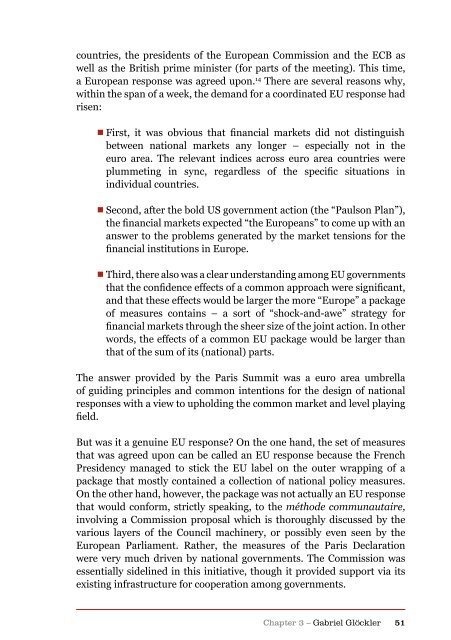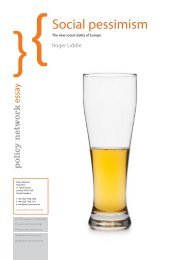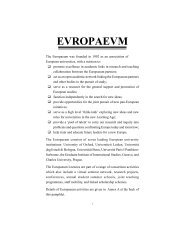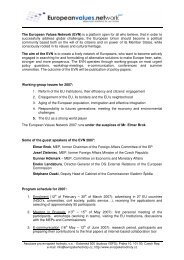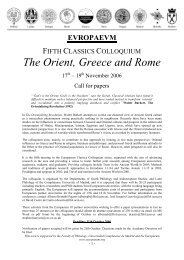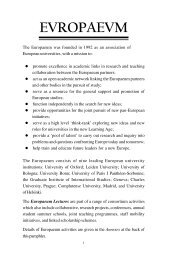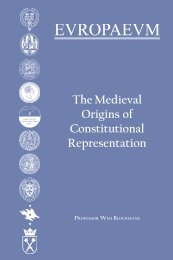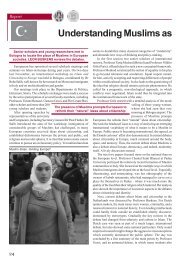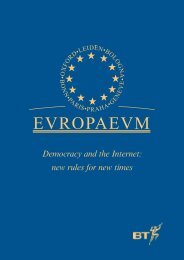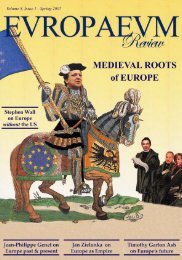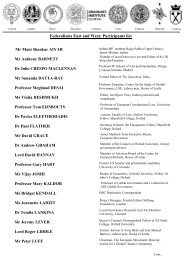Authors Iain Begg | Gabriel Glöckler | Anke Hassel ... - The Europaeum
Authors Iain Begg | Gabriel Glöckler | Anke Hassel ... - The Europaeum
Authors Iain Begg | Gabriel Glöckler | Anke Hassel ... - The Europaeum
Create successful ePaper yourself
Turn your PDF publications into a flip-book with our unique Google optimized e-Paper software.
countries, the presidents of the European Commission and the ECB as<br />
well as the British prime minister (for parts of the meeting). This time,<br />
a European response was agreed upon. 14 <strong>The</strong>re are several reasons why,<br />
within the span of a week, the demand for a coordinated EU response had<br />
risen:<br />
n First, it was obvious that financial markets did not distinguish<br />
between national markets any longer – especially not in the<br />
euro area. <strong>The</strong> relevant indices across euro area countries were<br />
plummeting in sync, regardless of the specific situations in<br />
individual countries.<br />
n Second, after the bold US government action (the “Paulson Plan”),<br />
the financial markets expected “the Europeans” to come up with an<br />
answer to the problems generated by the market tensions for the<br />
financial institutions in Europe.<br />
n Third, there also was a clear understanding among EU governments<br />
that the confidence effects of a common approach were significant,<br />
and that these effects would be larger the more “Europe” a package<br />
of measures contains – a sort of “shock-and-awe” strategy for<br />
financial markets through the sheer size of the joint action. In other<br />
words, the effects of a common EU package would be larger than<br />
that of the sum of its (national) parts.<br />
<strong>The</strong> answer provided by the Paris Summit was a euro area umbrella<br />
of guiding principles and common intentions for the design of national<br />
responses with a view to upholding the common market and level playing<br />
field.<br />
But was it a genuine EU response? On the one hand, the set of measures<br />
that was agreed upon can be called an EU response because the French<br />
Presidency managed to stick the EU label on the outer wrapping of a<br />
package that mostly contained a collection of national policy measures.<br />
On the other hand, however, the package was not actually an EU response<br />
that would conform, strictly speaking, to the méthode communautaire,<br />
involving a Commission proposal which is thoroughly discussed by the<br />
various layers of the Council machinery, or possibly even seen by the<br />
European Parliament. Rather, the measures of the Paris Declaration<br />
were very much driven by national governments. <strong>The</strong> Commission was<br />
essentially sidelined in this initiative, though it provided support via its<br />
existing infrastructure for cooperation among governments.<br />
Chapter 3 – <strong>Gabriel</strong> Glöckler 51


